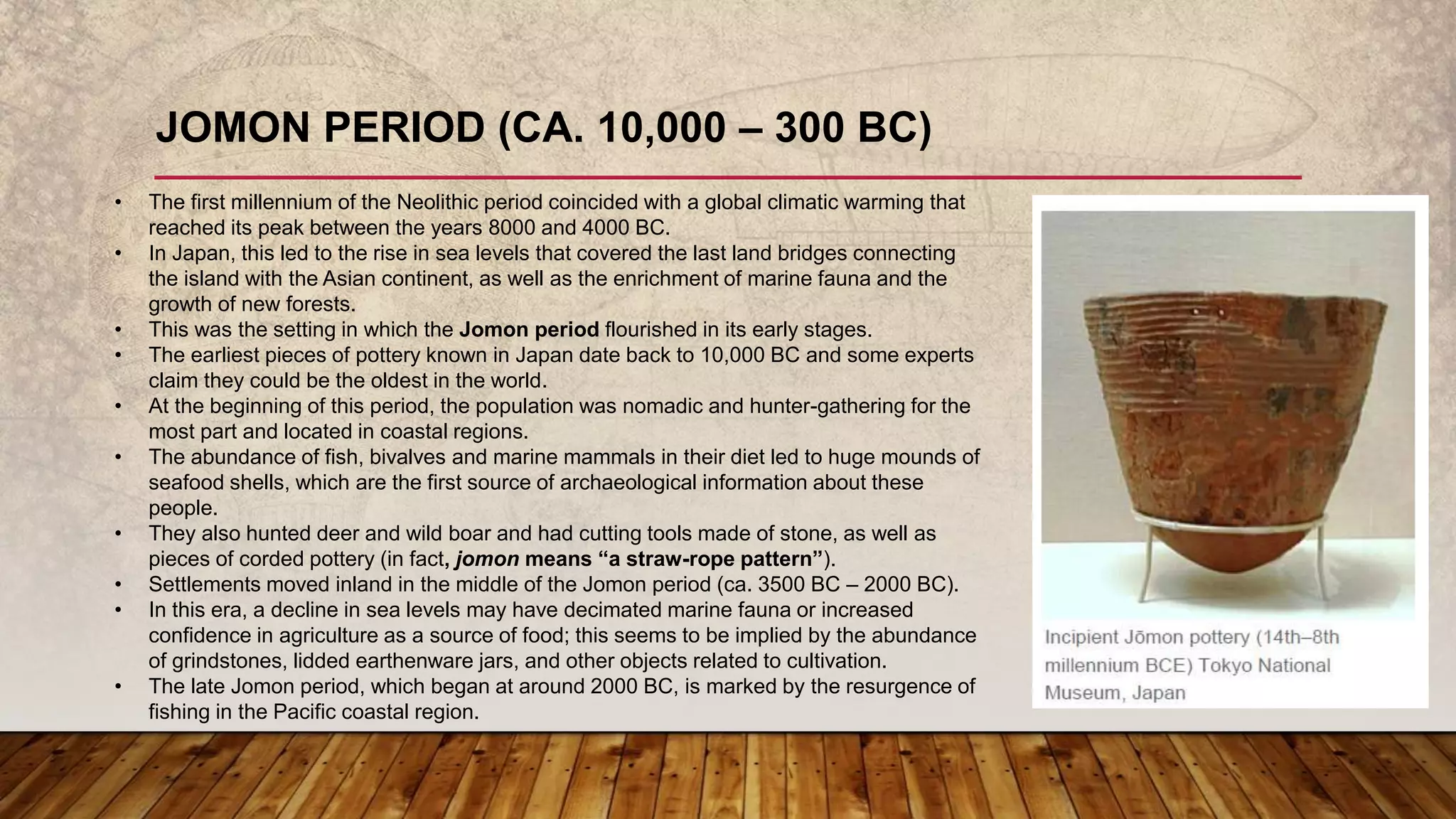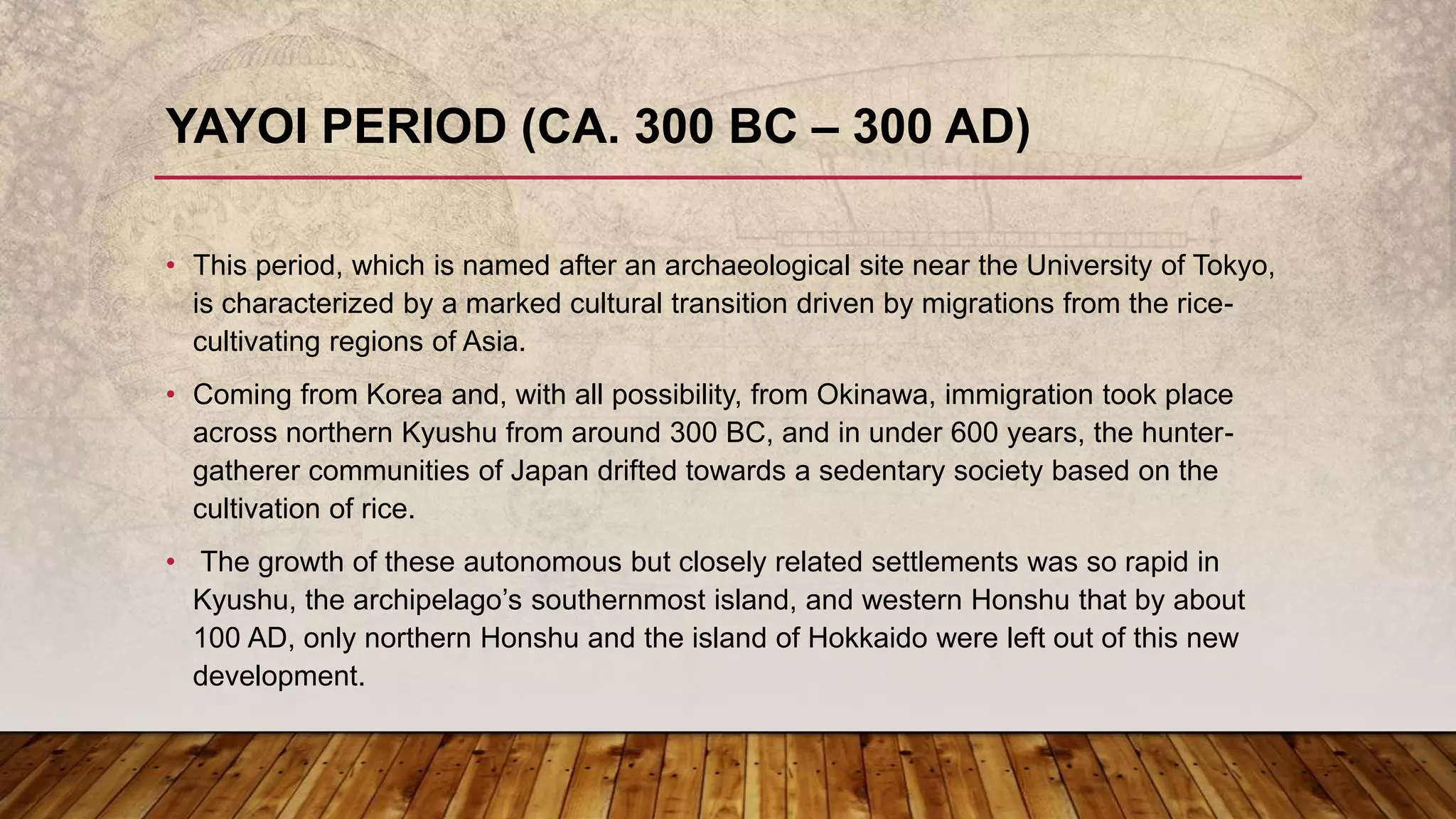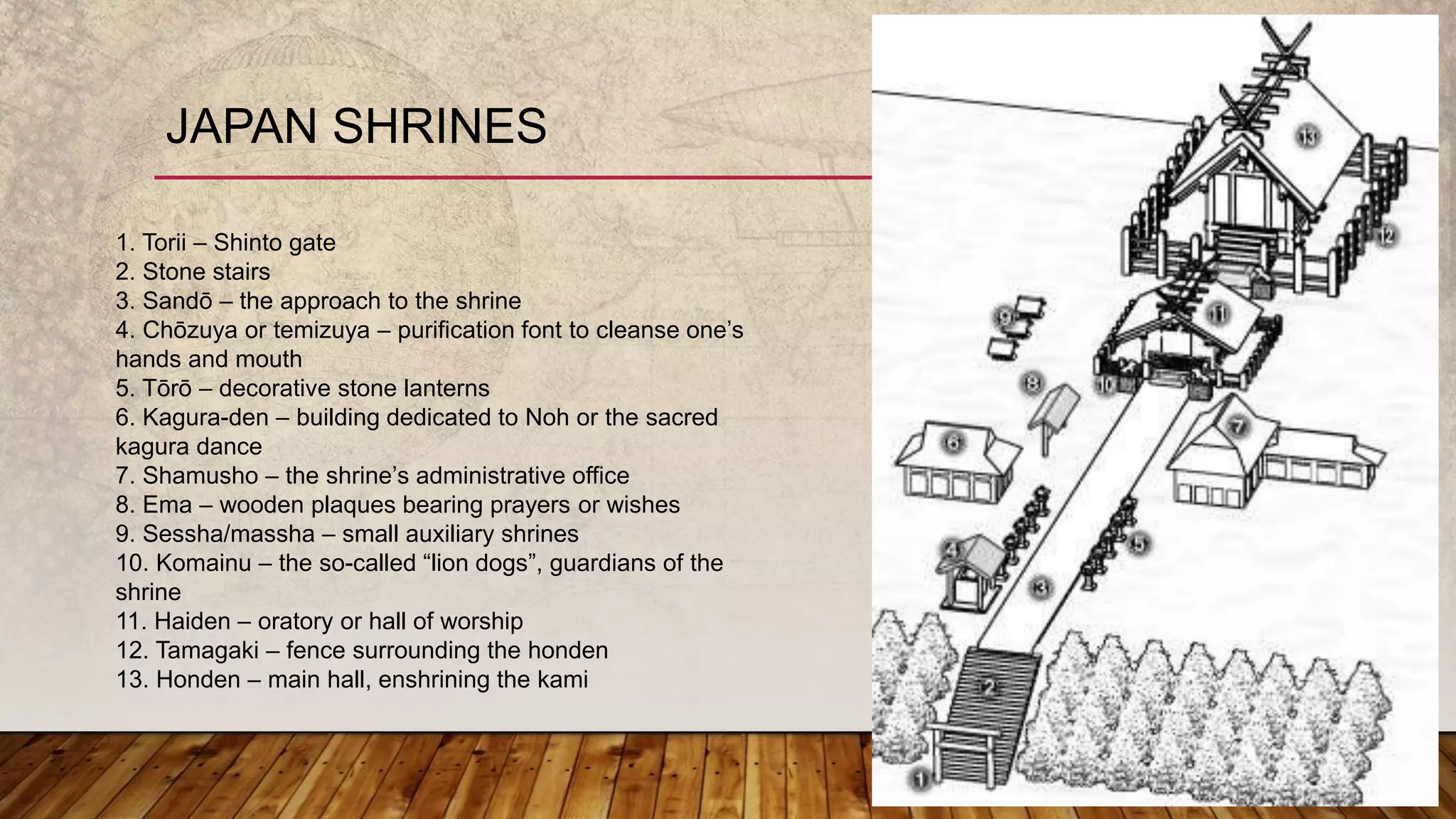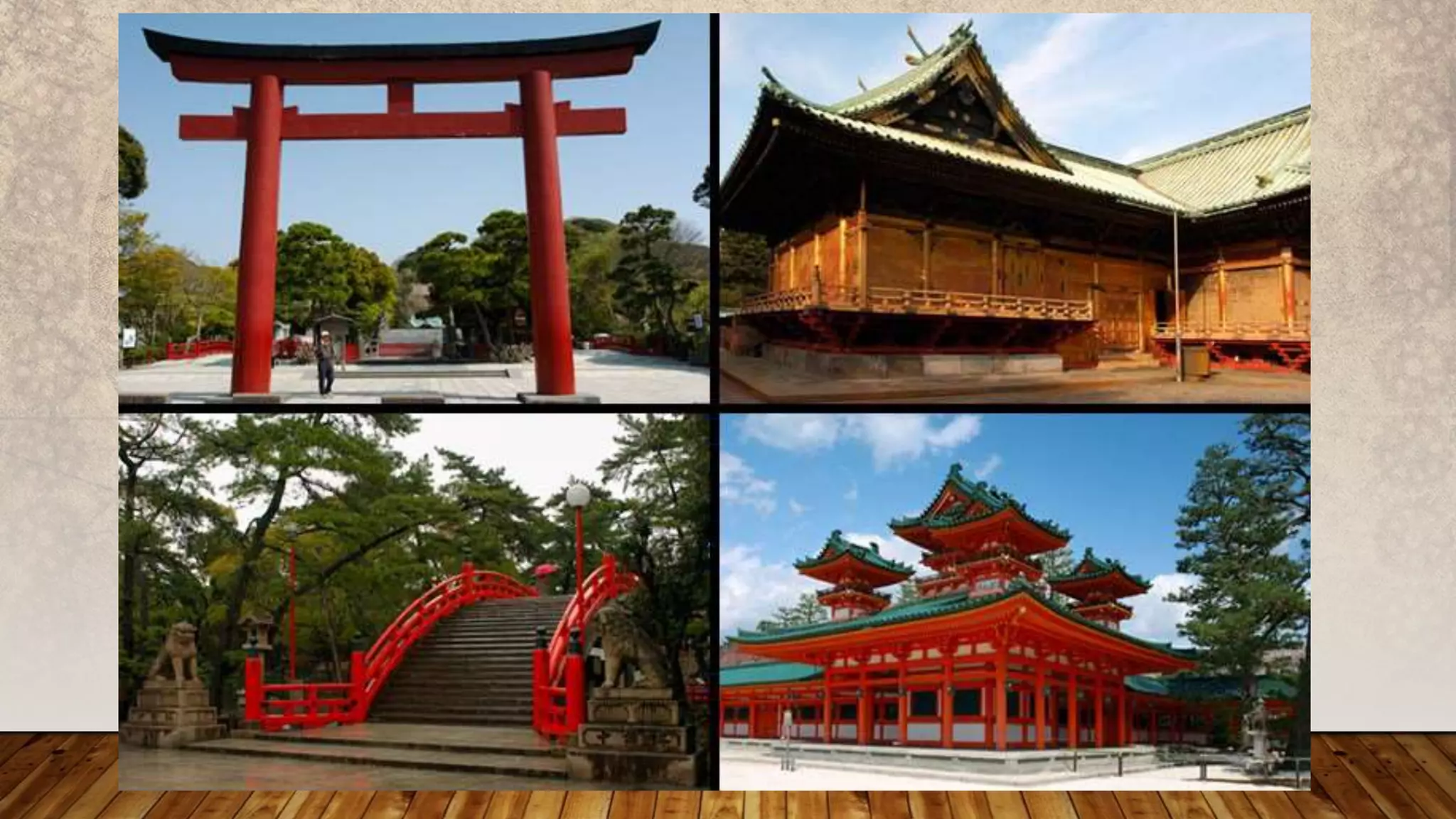The main religions in ancient Japan were Shintoism and Buddhism. Shintoism focused on nature worship and small household shrines for ancestors. Buddhism was introduced from Korea in the 6th century and large temples were constructed, with the oldest being Asukadera. Temple architecture initially resembled Chinese styles with wide courtyards and symmetry, but over time became adapted to Japanese tastes and incorporated gardens.













